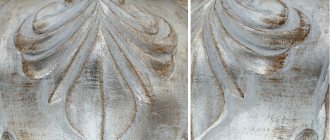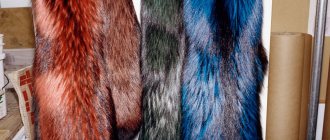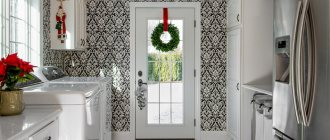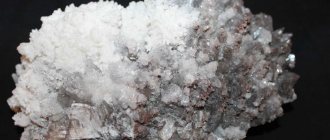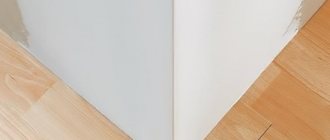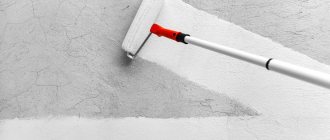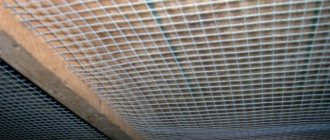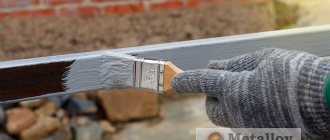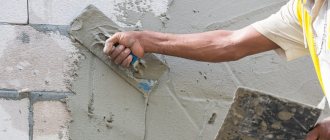When is bluing necessary?
The concept of “blueing” came to us back in 1880, when it was often practiced by the best gunsmiths of that time. Then and now it is the best finishing method for high-quality double-barreled shotguns and modern piece rifles.
Professional and amateur hunters, as well as those who simply take care of their weapons, resort to various methods of bluing weapons. This process is carried out both by specialists and at home. What we get as a result:
- The product is completely protected from corrosion, because rust does not form on the blued layer;
- the product looks more presentable;
- when hunting in sunny weather, the black barrel of the gun is not noticeable;
- resistance to abrasion and other mechanical damage.
Blueing a weapon has many advantages.
If you are not lucky enough to become the owner of a blued weapon initially, use one of the many methods and overcome this unfortunate misunderstanding.
Burnishing with “rusty varnish”
Using “rusty varnish” is another method of bluing a weapon that can be used at home. And although such a coating wears off quite quickly and is not resistant to mechanical stress, it would be wrong not to consider the method at all, since it is the simplest and least expensive. Its essence is extremely simple - to treat the metal surface with a corrosive medium - “rusty varnish”.
To prepare the reagent at home, you will first have to mix two components: hydrochloric acid (12 grams) and nitric acid (20 grams). In this case, it is recommended to measure the required amount using pharmacy scales rather than beakers, since the density of the two reagents is different. A reaction disorder can occur even with 1 extra gram of the substance. Once the two acids are mixed, add 30 grams of iron oxide and 5 grams of iron filings to the container.
Once all the components are mixed, it is important to wait some time for the chemical reaction to take place completely. After this, the solution must be mixed with 50 grams of alcohol and 50 grams of distilled water. The barrel should be immersed in liquid for 12 hours. After this period of time, the part is removed and washed with cold water. All red marks must be brushed off. The result of all procedures will be a beautiful black trunk.
Considering that prolonged exposure to cold varnish negatively affects the quality of the metal, it is strongly not recommended to use the method for blackening edged weapons. However, if you still decide to take the risk, then carefully monitor the time it may take to blue the barrel. But you shouldn’t count on a good result, since the coating will still wear off quite quickly with frequent use of edged weapons.
Features of technology and methods of bluing weapons at home
The bluing process is essentially a chemical reaction, so it is carried out under special conditions and in compliance with certain rules. The room in which manipulations will be performed must be well ventilated or have a powerful exhaust hood. To work with acid and other chemical compounds, do not use metal containers, only earthenware, porcelain or glass.
Materials for processing can be sandpaper, powdered pumice, and fine sand. With their help, the surface of the weapon is thoroughly cleaned and polished. Liquids must be used in the correct proportions, because... Most compounds are chemical based and can be harmful to weapons.
Regardless of the bluing method, it is necessary to prepare the following tools and materials:
- steel wool;
- latex gloves;
- protective glasses;
- cleaner;
- weapon oils (lubricating and cleaning);
- applicators (cotton swabs, rags, brushes, toothpicks).
To blue a weapon you will need gun oils.
It is impossible, as experts say, to perform high-quality blueing at home. This is especially true for the oxidation of steel, which requires industrial conditions.
Home metal processing methods include cold, hot, and oxidizer bluing. Let's look at the features, as well as the advantages and disadvantages of each of them.
Hot bluing in oil
The most popular method of bluing weapons at home is the method using oil. Most experienced hunters will say that this is the only correct procedure, since it is as close as possible to that used in weapons factories. And it’s quite difficult to argue with such a statement, because the protective film turns out to be really very durable, so the bluing effect will last much longer.
In addition, during the work you will not have to use various chemicals, so there is no chance of poisoning. The technology itself is also not complicated:
- First you need to heat the barrel to a high temperature. Moreover, the hotter the metal, the better. To do this, you can use either a regular wood-burning stove or a simple metal barrel, building a fire in it. The most important thing is to be careful when removing a hot metal part. So don't forget to wear rubber gloves and get some tongs in advance.
- We immerse the heated barrel in a container with linseed or machine oil. For convenience, it is best to place the liquid in a small but fairly deep metal tray. It is necessary to keep the hot barrel in the oil for a maximum of ten seconds. A clear sign that the metal is ready for further processing are dark spots that will begin to appear across the entire surface.
- We process the barrel with a blowtorch. After removing the barrel from the oil, hang it by the front sight on a metal wire, then do not hesitate and begin the additional heat treatment procedure. The “baking” procedure should be carried out evenly and until the metal changes its color from brown to black. As soon as the entire surface of the part changes color, turn off the soldering iron.
The barrel should cool naturally for several hours. Then all that remains is to get rid of any remaining oil by wiping the metal with a dry cloth. After such bluing, the likelihood of corrosion on the metal will be minimal. In this case, the protective film will be resistant to mechanical damage.
Oxidizing agent treatment
The oxidation method is often carried out by specialists in laboratories where the necessary reagents can be found: potassium nitrate and sodium hydroxide. The product is pre-prepared. Using steel wool, surfaces that will be blued are processed. Next comes the dyeing process itself:
- For 10-15 minutes, the weapon is placed in a cleaning composition to remove lubricants, dirt, and oil. Trisodium phosphate, denatured alcohol, or kerosene can be used as a bluing cleaner;
- Rinse off the cleaner under running cold water, but leave the product on for longer than 2 minutes. Kitchen detergent is washed off with hot water;
- Using a steel wire, the weapon and its individual parts are immersed in the prepared solution. Small elements can be immersed using a sieve. The solution for hot bluing is heated to a temperature of 135 degrees. The barrel of the weapon is immersed at an angle. This way you can avoid the formation of air inside;
- the sieve with small parts needs to be moved from time to time so that they are evenly colored;
- The soaking time in the bluing solution ranges from 15 to 30 minutes. You need to navigate by color. When the product acquires the desired shade, it is removed and washed in cold water;
- The washed parts and the main product are placed in a container with boiling water to remove residual chemical reagents. Keep the weapon in boiling water for up to 15 minutes. Parts with figured carvings up to half an hour;
- Finally, the blued parts are placed in a reservoir of water-repellent oil. During operation, it will protect products from corrosion and various contaminants.
Kerosene is used as a cleaning agent for bluing.
Plus bluing by oxidation is that the result is quite durable. Knives treated in this way become protected without destroying the hardness of the metal. The disadvantage is that the method is quite expensive and is not suitable for those who do not have at least a superficial knowledge of chemistry.
Steps
Hot blueing
Polish the gun barrel and other parts to be blued.
This is necessary to remove any rust and other red oxides that flake off during the process, as well as to smooth out any pits or scratches present. You can use 000 steel wool or 600 to 1200 grit sandpaper for polishing. X Information source
Prepare parts for dipping in cleaning and hydrocyanic solutions.
The chemicals used for blueing are caustic. The chemical solution used to clean the metal of the gun before bluing can also be caustic, depending on its chemical composition. Use rubber gloves when working with these substances, so you can correctly place the parts in the tank with the hydrocyanic solution so that it is convenient to remove them later.
- Cut a piece of wire that is longer than the trunk so that its ends stick out from different sides of the trunk. After threading the wire through the barrel, bend both ends into hooks that do not touch the barrel so you can hang the barrel from a hook, cord, or wire that extends beyond the chemical bath.
Small parts can be dipped in a stainless steel basket.
Submerge the gun parts in a bath of cleaning solution.
The parts should remain there for 10-15 minutes to remove oil, dirt, and grease that could interfere with the blueing process. You can use any of the following chemical cleaners, provided you read and follow the directions for its use, handling and disposal:
- One chemical cleaner, now discontinued, contains sodium metasilicate and is listed as a commercial floor cleaning solution. A cleaner that can be used instead is trisodium phosphate, a component of a number of commercial detergents. X Source of information
Some manufacturers of blueing products recommend using kerosene, followed by washing the metal in a weak solution of dishwashing detergent. X Source of information
- Some bluing enthusiasts use a special cleaning oil followed by acetone (nail polish remover) to clean the metal, while others use denatured alcohol. (One such cleaning oil is a mixture of mineral and vegetable oils, alcohol, alkali salts and benzyl acetate; commercial name "Ballistol".) X Source of information
Rinse off the cleaning solution with cold water.
Flushing should take 2-3 minutes.
- If you used dish soap, use hot water to remove the detergent. X Source of information
Immerse the gun parts in the bluing solution.
The blueing solution used in hot bluing is a mixture of caustic salt, potassium nitrate, and sodium hydroxide, known as "Traditional Black Caustic". This solution must be heated to a temperature of 135-155 degrees Celsius (depending on the composition of the blueing solution).
- Before heating the prussic solution, mix it thoroughly to break up any possible lumps of prussic salt that may appear on the surface or at the bottom
When immersing the barrel in the blueing solution, create an angle so that all air bubbles can escape. Make sure it is completely submerged.
- Immerse the metal basket containing the small parts of the gun until the hydrogen cyanide solution completely covers them.
- Leave the gun parts in the hydrogen cyanide solution for 15-30 minutes. Follow. When the metal begins to acquire a yellow tint, it will need to be removed from the solution
- Stainless steel parts of the gun must be immersed in a separate solution consisting of nitrates and chromates. This solution must be heated in the same way as sodium hydroxide. X Source of information
Rinse off the hydrogen cyanide solution with cold water.
Run the gun parts through cold water to rinse off the prussic salts.
Immerse the gun parts in boiling water.
Boiling water will remove any remaining hydrogen cyanide solution. Simple parts will need 5 to 10 minutes, while complex or decorative parts will require up to 30 minutes.
- If the gun contains any soldered elements, then after the chemical procedure they will turn the same color as the rest of the metal. In this case, use a cotton swab.
Place the treated parts in a bath with oil displacing the water.
This will protect the metal from rust and sweat and fat from your body. Leave the parts in the oil bath for 45-60 minutes until they are completely cool. X Source of information
Blue rust
Polish the parts to be blued.
Again, using steel wool or 600-1200 sandpaper, remove loose rust, scratches and erosion.
- If you plan to strip the metal before blueing, use a phosphoric acid-based automotive rust remover. Some people use white vinegar, which contains acetic acid, for this.
Chemically clean the metal of any possible dirt, oil, or grease.
19th century gunsmiths who used blueing probably did not have the ability to clean the metal chemically and therefore had no idea how much of an impact it could have on the end result. You can use any of the chemicals described in the hot blueing method; then rinse using the methods indicated in the same section.
Coat the metal surface of the gun with a mixture of hydrochloric and nitric acid.
The mixture of acids actually causes the metal to rust, but does so evenly over the entire surface.
- Instead of covering the parts in an acid solution, you can place the gun parts and the open container of solution in a chemical cabinet and seal it for 12 hours. Acids will evaporate from the container and condense on the metal surface. This method is called "steam bluing".
Here's another option for you. Coat the metal parts of the gun with a solution to bluish the rust, and then place them in a chemical cabinet, also for 12 hours. Often, the first coat is applied as a primer before the second coat is applied, and only then are the parts placed in the chemical cabinet. X Source of information
Immerse the metal parts of the gun in boiling distilled water.
This will stop the rusting process by removing the acid solution.
Remove the red oxide, rust that has formed on the surface, but leave the black oxide that has formed underneath.
Rust is usually removed with a wire brush/wheel that has a lot of soft metal bristles.
Repeat acid treatment, boiling, grinding until you reach the desired level of blueness.
In some cases, the metal may develop a deep color, which means that further attempts at blueing will not yield anything.
Coat the gun parts with oil.
The oil prevents the formation of rust and protects the metal surface from dirt, sweat, and wear. Once you have applied the oil, let the pieces sit overnight before you assemble them. X Source of information
Cold bluing
Polish and clean the metal surface of the gun.
You can polish the surface using steel wool or sandpaper as before; The stripping area depends on whether you are going to blue the entire gun or just some of its parts.
- If you plan to blue the entire gun, you can dip it in a cleaning solution, just like you would for hot blueing.
If you plan to simply touch up the existing blueing, you may want to turn to using cleaning oils in the areas where you want to remove the old blueing and prepare the metal for cold blueing (the cleaning oil will dissolve the existing blueing if overused). Use cotton balls with acetone to remove cleaning oil. You may have some scratches/indentations after this procedure which will require additional sanding/polishing.
Heat the metal moderately.
Although this process is called cold blueing, slightly heating the metal before starting will allow the metal to better absorb the reagent and, accordingly, produce the blueing reaction. Heat the metal by leaving it in the sun for several hours; or using a hair dryer, heat gun, or even a regular oven set to the lowest temperature. X Source of information
Apply hydrogen cyanide solution.
Slowly apply the solution to the area, do it as evenly as possible, and use a clean swab. Apply the solution in one stroke, covering small areas or sections (5-7.5 cm), when it comes to covering large areas, use steel wool. This will prevent staining due to blue discoloration. X Source of information
- To apply the prussian solution over large areas, it is advisable to use cloth from old cotton T-shirts or new toothbrushes. For small areas, use cotton balls, cotton swabs, or flat toothpicks that are smaller than the area to be covered with the solution.
You can soak small parts such as screws or lids in a hydrocyanic solution. If you don't have enough solution to do this, spray it on with a spray bottle, placing the parts in a glass, plastic or glass tray. Once the parts are completely coated, you can pour the excess back into the bottle for reuse.
Apply the solution a few more times until you achieve the desired level of blue.
Apply each layer with a new pad, using a new piece of steel wool to ensure a smooth application of each new layer.
- The more layers you apply, the darker the blue will be; however, each new layer will be less and less effective than the previous one. Most often, seven layers are enough to obtain a dark blue metal color. X Source of information
If you have spots that won't bluish, start the process over on those areas, first sanding with 320-400 grit sandpaper. Don't rub more than necessary.
At the end, when you have already achieved the required level of blueing, treat the pistol parts with gun oil.
Apply a layer of gun oil every four hours, using a cotton ball to remove the previous layer before applying a new one (essentially you are washing out the prussic solution with gun oil, without using water)
- Do not use cleaning oil for this process as this will remove all the hard-earned blue discoloration. X Source of information
Criteria for choosing a bluing method
Before you begin the bluing procedure itself, you need to decide which method will be most effective in your particular case. This is done according to several criteria.
- The degree of wear of the previous bluing. If most of the coating remains, it can be renewed using alkaline bluing or cold bluing. If more than half of the coating has been erased, it is recommended to completely remove the old layer and carry out the processing procedure again.
- Age of the weapon. Antique samples were processed using thermal bluing. Unfortunately, today this method is not in demand due to the length of the process. You can repeat it at home using special preparations available for sale, or seek help from a specialist. There are some rules here. Ancient weapons with silver soldering cannot be treated thermally, because... salts can dissolve silver.
- The rationality of one or another method of bluing in terms of cost. It is at least unreasonable to bury a cheap barrel using an expensive thermal method.
- The cost of the bluing methods themselves. Here they are guided by common sense and foresight. If now an expensive coating method seems unnecessary, then in the future such savings may result in expensive restoration. Also, cheap bluing methods will protect the weapon for a short period of time, and the procedure will need to be repeated over and over again. And if you calculate the cost of regular events and one, but for a long period, then the second option will not seem so expensive.
Preparatory procedures
Whatever method you choose for bluing a gun barrel, you must perform a number of preparatory procedures in a certain sequence, which will be described below.
- We carefully clean the surface of the barrel on which the steel will be blued using a cleaning rod.
- We polish the surface to perfect condition.
- We disinfect the surface (after this, all work is done exclusively with rubber gloves).
- We use special substances for bluing metal.
- We re-process the surface with a grinder.
After this, you can start bluing the metal, observing safety regulations.
Safety rules and regulations
Any manipulation with weapons requires compliance with safety precautions, especially for manipulations at home. Failure to comply with the rules of conduct is dangerous to the health and life of not only you, but also those around you.
- Before bluing your firearm, be sure to unload it and remove any woodwork.
- Solutions with chemical components can emit harmful fumes, so the entire process should take place in a well-ventilated area.
- Select special utensils and tools for bluing, keep them separate from household equipment and wash them well after use.
- Working with chemicals requires full protection to avoid burns.
Whichever bluing method is chosen, it requires preliminary preparation:
- cleaning the surface of the workpiece;
- thorough surface grinding;
- degreasing, after which you need to continue working only with rubber gloves;
- using only those products that are suitable for bluing weapons at home;
- final processing of the product.
When starting bluing, you should strictly follow the order and sequence of actions to prevent damage to the weapon.
Warnings
- Before using any of the methods described above, make sure the gun is unloaded! Also remove the magazine. X Source of information
- Carry out all blueing processes in well-ventilated areas. Caustic salts used for hot blueing are particularly poisonous.
- Do not attempt the hot blueing process on aluminum. This will cause a violent chemical reaction with chemically aggressive salts, which can ultimately lead to serious chemical burns. Hot blueing is also not recommended for old weapons, or double-barreled shotguns, in which soldering, including silver, was used, since the blue solution will dissolve all the solder. X Source of information
Birchwood Casey's Complete Guide to Metal Blueding
There is nothing more beautiful than the rich color of a well-oxidized firearm or the natural finish of a blued long gun. Nothing will help you treat metal surfaces as flawlessly as Birchwood Casey.
METAL PREPARATION
1. Before re-oxidizing or bluing, it is necessary to remove the old coating and rust. First, after removing the stock/forend and trigger mechanism, clean all metal surfaces with a sponge soaked in Birchwood Casey Cleaner-Degreaser and rinse thoroughly with water (see Expert Tips below). Always use gloves when preparing and performing the oxidation process.
Expert advice - Cleaning and degreasing are critical. At this stage, smooth out the corners. For best results, use Birchwood Casey Cleaner-Degreaser. If this product is not available, regular liquid soap can replace it. If necessary, carry out the cleaning procedure two more times!
2. Apply Birchwood Casey Blue & Rust Remover using a soaked pad and leave on for 2 minutes. Using a small steel wool pad (moistened with Blue & Rust Remover), lightly buff the metal to remove old bluing and loose rust. Continue the process until a glossy shine appears.
3. If the metal surface has deep scratches and/or pitting, lightly sand the surface using 280-grit sandpaper and then polish with steel wool. To remove deep ulcerations, a needle file may be needed (see Expert Tips).
Expert Tips -
When
sanding metal surfaces, wrap the sandpaper around the hard, flat side like a file. This will reduce hand fatigue and will also ensure a smooth surface and sharp edges.
4. In any case, take your time when preparing the metal surface. Continue polishing until desired results are achieved. Also, don't forget the trigger, screw heads, and other parts that need to be machined. Disassemble all mechanisms into parts for metal preparation and processing.
5. Reapply Cleaner & Degreaser using a sponge and rinse again cold water. When doing this, be careful not to touch the metal with your fingers, as this may leave noticeable marks that will appear after the oxidation process.
Expert Tips - When preparing metal rounded surfaces, such as those found on muskets and shotguns, for bluing, take a strip of cloth-backed sandpaper or emery cloth and quickly work the barrel in a back-and-forth motion to a boot-like shine. This technique is fast cutting, so be careful not to cut unwanted grooves. Apply proper polishing using steel wool.
COLD BLUEING (OXIDATION)
1. Apply Birchwood Casey Perma Blue® Paste or Liquid Gun Blue using the applicator to the entire surface. The work must be carried out quickly but carefully. You can divide the surface into 2 or 3 sections for ease of work.
2. Leave the solution on the metal for 30-60 seconds only. Not longer. Then neutralize the chemical reaction by immediately and thoroughly rinsing with cold water followed by dry wiping (see Expert Tips below).
Expert advice - time is of the essence when oxidizing. For best results, do not allow the solution to contact the metal surface for more than 1 minute. It is best to keep the solution in contact with the metal surface for as little time as possible.
Ž3. After or during washing, polish very gently with fine steel wool to harmonize the colour, if necessary. If you use steel wool for polishing, you should use the Cleaner & Degreaser again to remove any oil that may form on the surface. Evaluate the quality of the oxidation performed. If there are streaks on the surface or you would like a deeper/darker color, repeat steps 1, 2 and 3 until you achieve the desired color.
4. Assemble your gun. You have completed the oxidation process. To keep your gun looking like new, apply Barricade Rust Protection from time to time or after every shooting session.
BLUEING
In earlier times, metal bluing was a slow-moving rust-forming process that combined a chemical reaction and certain atmospheric conditions to create a thin layer of corrosion on the surface of the metal. This was time consuming and an inconsistent process.
Nowadays, bluing is a quick and easy process thanks to Birchwood Casey Plum Brown™ Barrel Finish. Proper preparation of surfaces to be blued is an important step in the process. If you're bluing an antique long gun or heavy whaling gun, you'll likely have to repair scratched, pitted, rusted, or post-file areas. Refer to “Metal Preparation” on page 9 for this important task.
1. Birchwood Casey Plum Brown Barrel Finish requires heat to activate the true bluing process of the product (the chemical reaction between the solution and the ferrous metal). When properly preparing and cleaning/degreasing steel, apply heat using a butane torch, gas, hotplate, or whatever is safe and convenient. For best results with a propane torch, use a high-flame nozzle and keep it 7-10cm from the surface.
Holding the barrel in a vise can cause cold spots (as the vise heats up). Instead, remove the gun carriage from the curved hanger to correct this problem.
2. Heat evenly by moving the heat source back and forth along the object being blued. Note that heavier areas (such as the breech of the barrel) get hotter and retain heat longer. In addition, small parts are more susceptible to overheating. Therefore, heat to 135 °C. For temperature control, read Carmichel's Tips below. It is not necessary to heat the entire barrel at once. You can heat and process the barrel in parts.
Expert advice - time plays a decisive role when bluing. For best results, do not allow the solution to contact the metal surface for more than 1 minute. It is best to keep the solution in contact with the metal surface for as little time as possible.
3. Once the ideal temperature of 135°C is reached, apply Plum Brown Barrel Finish using a soaked swab in long, even strokes. A rich dark color will appear immediately. (See Expert Tips below).
Expert advice - 135 °C is the temperature required to achieve a dark color effect when bluing. Achieving the exact temperature is not very critical, but it is important that the heating is as even as possible. For example, a long-barreled rifle must be heated evenly, so the temperature should be neither too high nor too low in any part of the barrel. Uneven heating can result in possible uneven coloring.
If the color appears too dull in this area, it is likely due to a cold spot. Heat the area immediately. If the metal is too hot, the solution may bubble and foam, resulting in a lighter, uneven color. In this case, cool the metal slightly before continuing processing. Take your time and apply the solution carefully, paying particular attention to color, texture and smoothness.
4. During the bluing process, you may notice a lack of uniformity in both depth and color. This is usually the result of a precipitate formed after a chemical reaction. Don't worry about this. As long as the color is not too deep, the process works well on shiny and semi-shiny areas.
5. Once the metal is cool enough to handle, rinse thoroughly cold water, dry with a clean cloth and lightly polish with steel wool. If you desire a deeper, more uniform finish, repeat the entire heating and bluing process.
6. Once bluing is complete, wipe down all surfaces with Barricade Rust Protection. This is very important after rinsing, the product will penetrate the surface and provide a deep, rich, red-brown, even coating. Leave the product on for 24 hours.
7. Reassemble your treated firearm.
Plum Brown Barrel Finish is a protective finish that will withstand heavy gun use and frequent use of cleaning chemicals. To keep your gun looking good, simply apply a coat of Barricade Rust Protection every now and then or after every shooting session.
ELIMINATION OF DEFECTS
Perma Blue Gun Blue
The result of bluing is a spotty and uneven finish. Why?
- Either the metal was not properly cleaned and degreased, or the contact with the solution was too long, more than 1 minute.
The metal did not become burred.
- Perma Blue Liquid or Paste Gun Blue should not be used on stainless steel or aluminum surfaces.
- The solution was in contact with the metal for too long, more than 1 minute.
The bluing is coming off.
- This happens if the metal has not been cleaned, degreased or not rinsed well enough with water.
- The solution was in contact with the metal for a long time.
The metal looks good after oxidation, but gradually becomes covered with rust.
- Barricade Rust Protection or other water-repellent rust preventatives were not applied.
- The bluing is not completely dry before applying oil.
- Not rinsed enough with water.
Plum Brown Barrel Finish
Uneven application. Why?
- Uneven heating may result in uneven coloring.
- The metal is not well cleaned and degreased.
- The chemical reaction may result in a precipitate.
The appearance was great, but the next day rust appeared.
- Not washed or dried well enough before applying each subsequent coat or water repellent oil.
- Barricade Rust Protection or other water-repellent rust preventatives were not applied.
You can buy everything you need for proper bluing of metal from the manufacturer Birchwood Casey in our online store 009.RU with delivery throughout Russia. Follow the news on the website, on social networks (VKontakte, Facebook), and you will be the first to learn about ongoing promotions, new products, and will be able to familiarize yourself with our products in more detail.
For any questions you may have, you can contact our consultants by email or by phone +7-985-456-90-09, +7-495-589-54-33.
